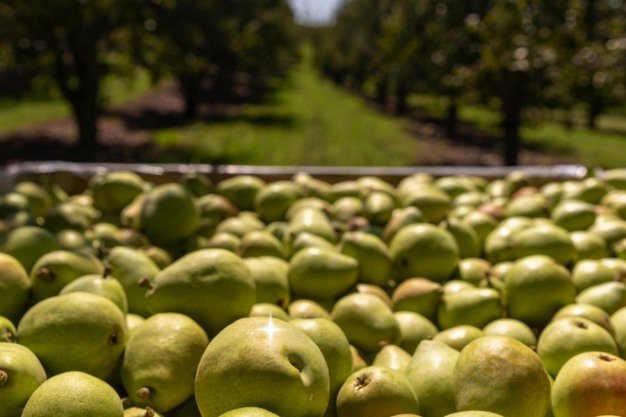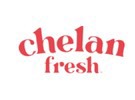The domestic pear crop is smaller this season. "The crops are really, really down across the board. Some of the pear-growing districts have heavy frost markings on a lower crop in the first place," says Mac Riggan with Chelan Fresh, noting this follows colder temperatures in the Pacific Northwest in February. "We were going to be at around 15 million boxes but we're actually going to be down around 10 million boxes."
That can make it challenging to move such a short crop. "It's not just about raising the price because pear demand exceeds supply. It's not that easy," says Riggan, adding that the debate may be between sending frost-marked pears to processing or selling them fresh to value-retail outlets. "It's going to take some thinking. It's not a no-brainer to turn this crop into a profit for the growers."
That said, the eating quality of the pears is expected to be very good. "We had really good spring weather for cell division. The cherries that came off this year had really good internal quality and pears and apples usually follow suit," he says.

Educating consumers
Pears can already be a bit of a challenge to move with consumers given their knowledge–or lack of knowledge–around conditioning the fruit. "You have to precondition some of them and they have to feel ripe. That's an ongoing challenge for the industry and the retailers to convey that ripening process to the consumer," says Riggan. "It's not a negative but it means consumers have to think a bit more about the fruit and when to eat it." He also notes that retailers could help move the fruit by educating consumers about how versatile it is–from using it in the ever-popular charcuterie or snacking boards to baking them into pies or using them in salads.
Either way, pricing will likely be stronger this season on the crop that will likely finish earlier. Generally, Pacific Northwest Bartlett pears stay in the market until the end of January to early February. This year, the supply could be done by Christmas. Anjous usually stay until June or even into July and this year, they may end before Memorial Day. As for Bosc, this variety could wrap by Valentine's Day.
 For more information:
For more information:
Mac Riggan
Chelan Fresh
Tel: (+1) 509-682-6074
macr@chelanfresh.com
www.chelanfresh.com
